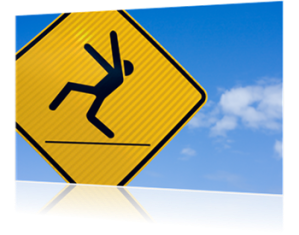Too Much Salt May Affect More Than Just Blood Pressure
You have probably read about the importance of limiting salt consumption for years. Perhaps your doctor has put you on a low-sodium diet. Our bodies do need a certain amount of sodium (one of the chemical elements in salt). Sodium helps maintain a healthy balance of fluids in the body, helps nerves transmit electrical impulses, and helps muscles contract and relax normally. But most of us get all we need from the salt that naturally occurs in food.
According to The National Heart Lung and Blood Association, 500mg is a safe daily minimum intake of sodium to maintain optimum health. Most Americans consume more than six times that much. The American Heart Association recommends consuming less than 1500mg of sodium per day.
Most scientists agree that too much sodium can increase blood pressure, which can lead to heart problems and stroke. But what if you have low-to-normal blood pressure? Should you put the salt shaker back on the table? Reach for the salted caramels?
Not so fast, says a new study authored by two faculty members from the University of Delaware’s College of Health Sciences and two physicians at Christiana Care Health System. The researchers discovered that too much sodium can cause harm to the heart, kidneys and brain, as well as blood vessels, regardless of whether or not it raises blood pressure.
“High dietary sodium can also lead to left ventricular hypertrophy, or enlargement of the muscle tissue that makes up the wall of the heart’s main pumping chamber,” says University of Delaware’s David Edwards, one of the study’s authors. “As the walls of the chamber grow thicker, they become less compliant and eventually are unable to pump as forcefully as a healthy heart.”
The study also revealed that high sodium intake is associated with reduced functioning in the kidneys, even if the increase in blood pressure was minimal. Another finding was sodium’s adverse effect on the sympathetic nervous system, the main purpose of which is to regulate the body’s “fight or flight” response.
“Chronically elevated dietary sodium may ‘sensitize’ sympathetic neurons in the brain, causing a greater response to a variety of stimuli, including skeletal muscle contraction,” says William Farquhar of University of Delaware, another of the study’s authors. “Again, even if blood pressure isn’t increased, chronically increased sympathetic outflow may have harmful effects on target organs.”
Coauthor Claudine Jurkowitz of Christiana Care acknowledges the challenges associated with studying the effects of salt restriction on clinical outcomes, including getting an accurate assessment of salt consumption and the large number of study subjects needed to obtain meaningful data. In spite of these and other challenges, Jurkowitz concludes, “A large body of evidence confirms the biological plausibility of the association between high sodium intake and increases in blood pressure and cardiovascular events.”
So how does one shake the salt habit? Study author William Weintraub, chief of cardiology at Christiana Care, says that hiding the salt shaker may not be enough. “Approximately 70 percent of the sodium in our diets comes from processed foods, including items that we don’t typically think of as salty such as breads and cereals,” he says. “Also, restaurant food typically contains more salt than dishes prepared at home, so eating out less can help reduce salt intake, especially if herbs and spices – instead of salt – are used to add flavor to home-cooked meals.”
As Weintraub notes, one way to reduce salt intake it to use alternative seasonings. In addition to herbs and spices, try lemon or lime juice. This way, you still get flavor as well as the health benefits many of these replacement seasonings offer. And remember, switching to sea salt or other “gourmet” salts won’t help; they might be pretty, but they have virtually the same amount of sodium as plain table salt.
The information in this article is not intended to replace the advice of your doctor. Talk to your healthcare provider about a nutritional plan that includes a safe level of sodium for you.


